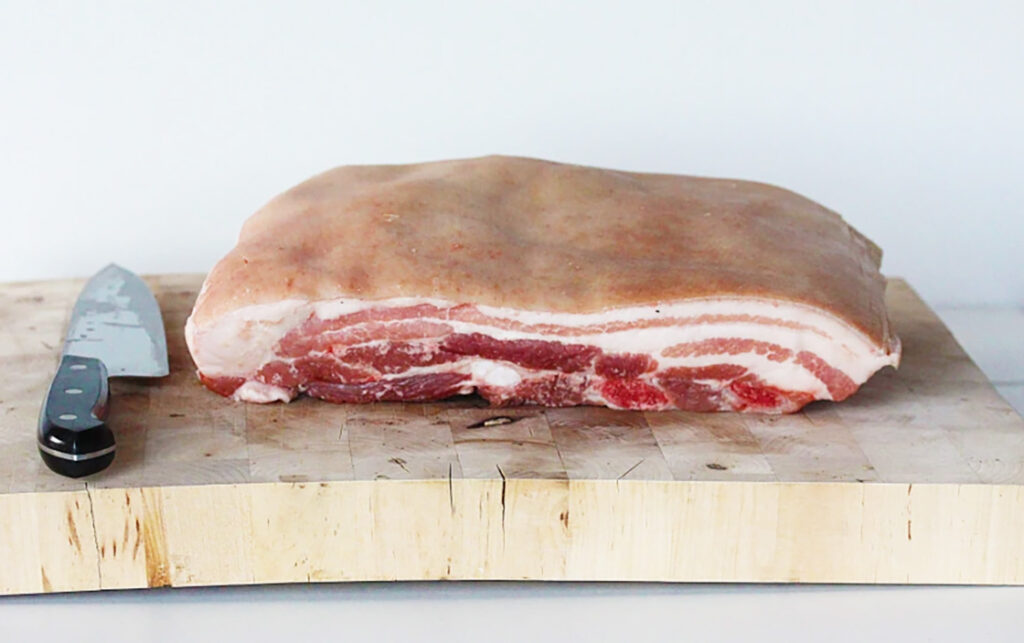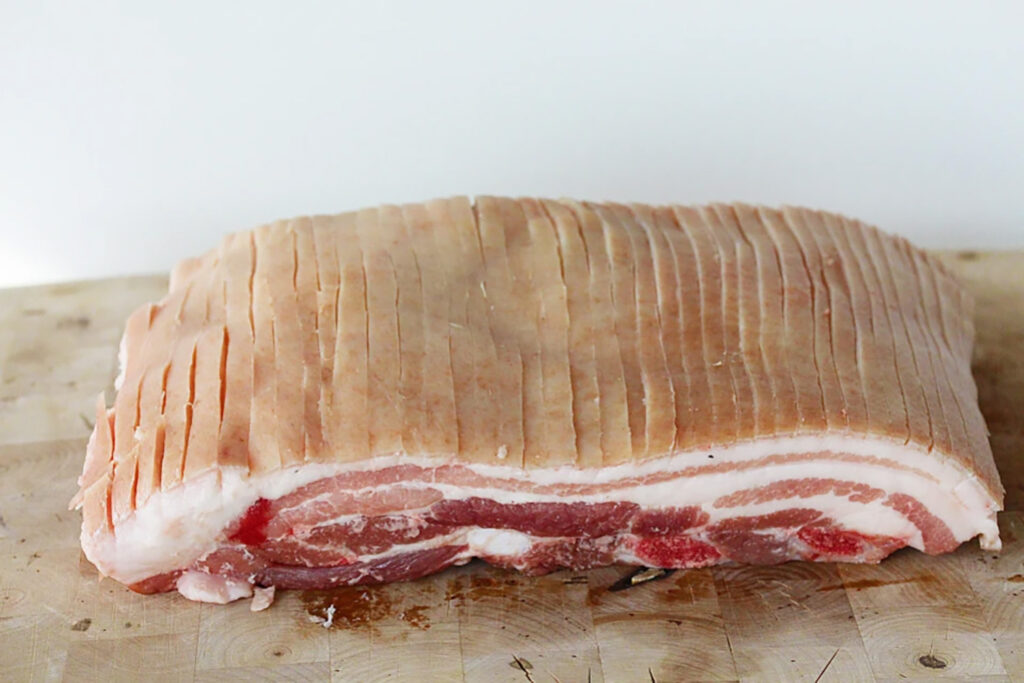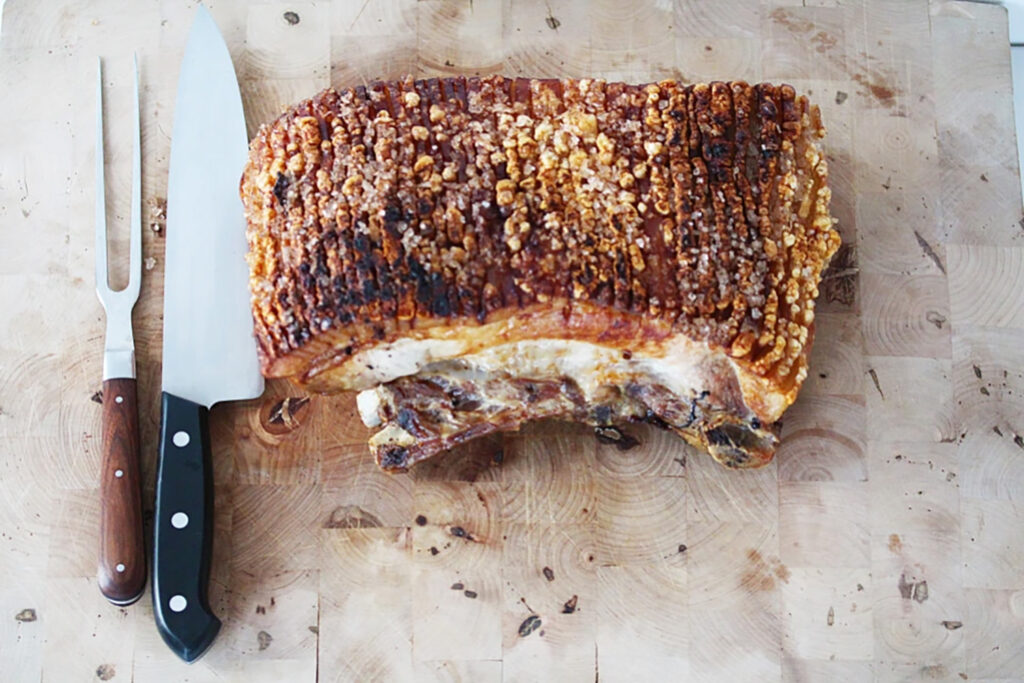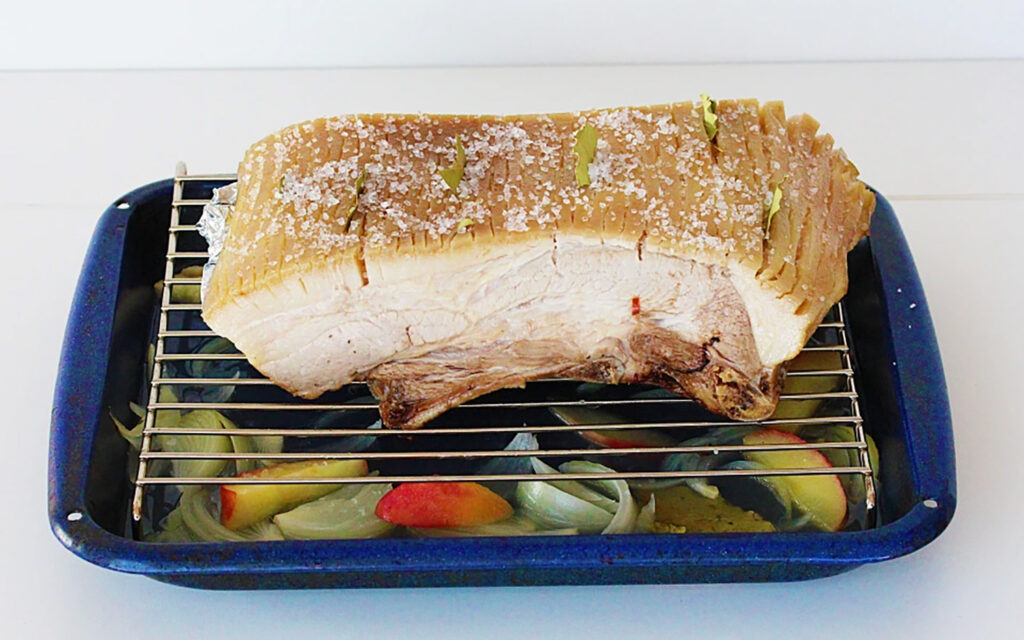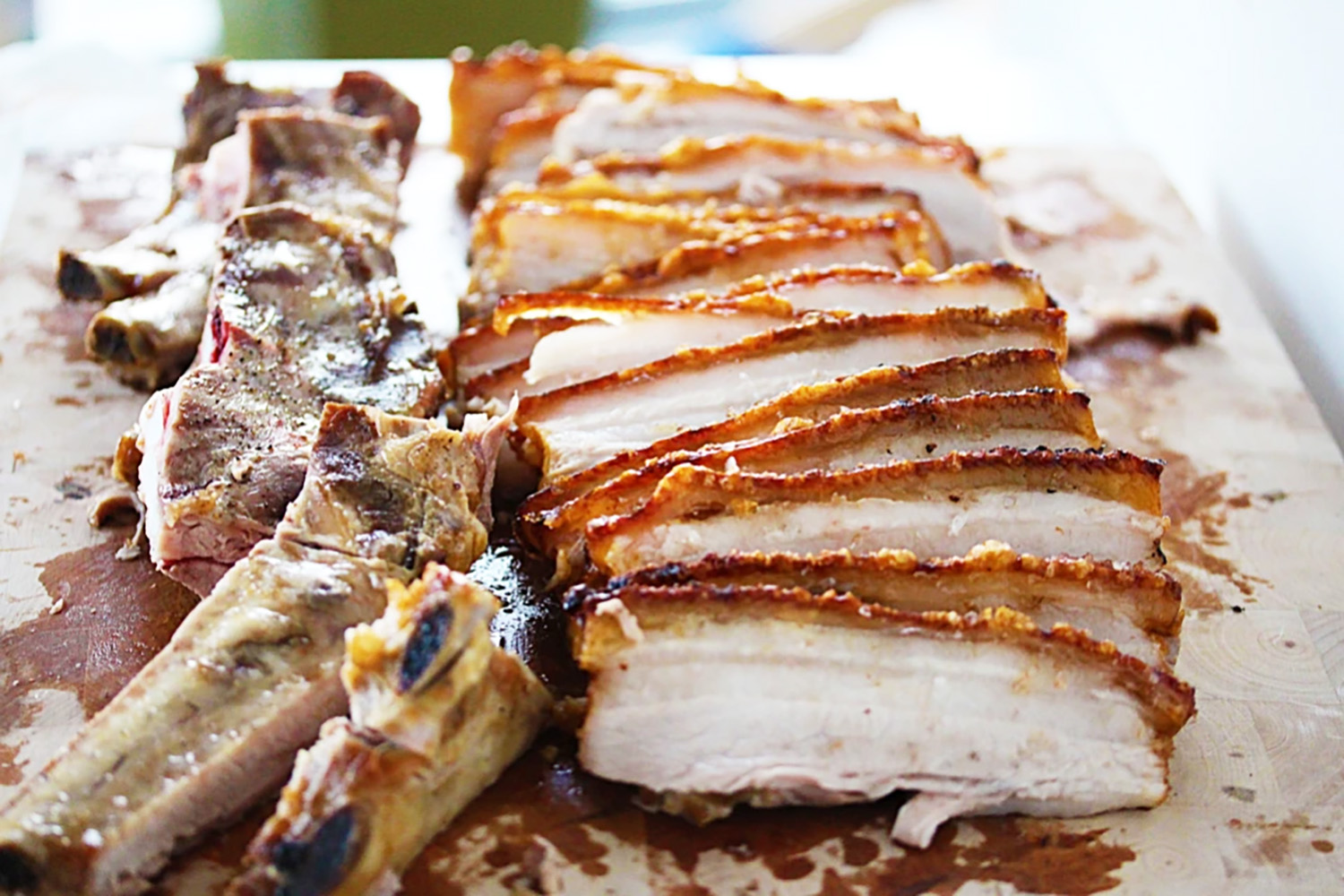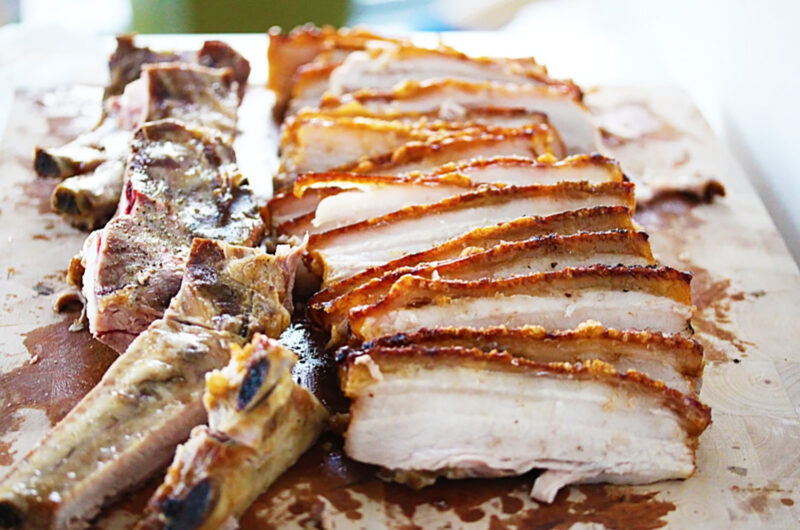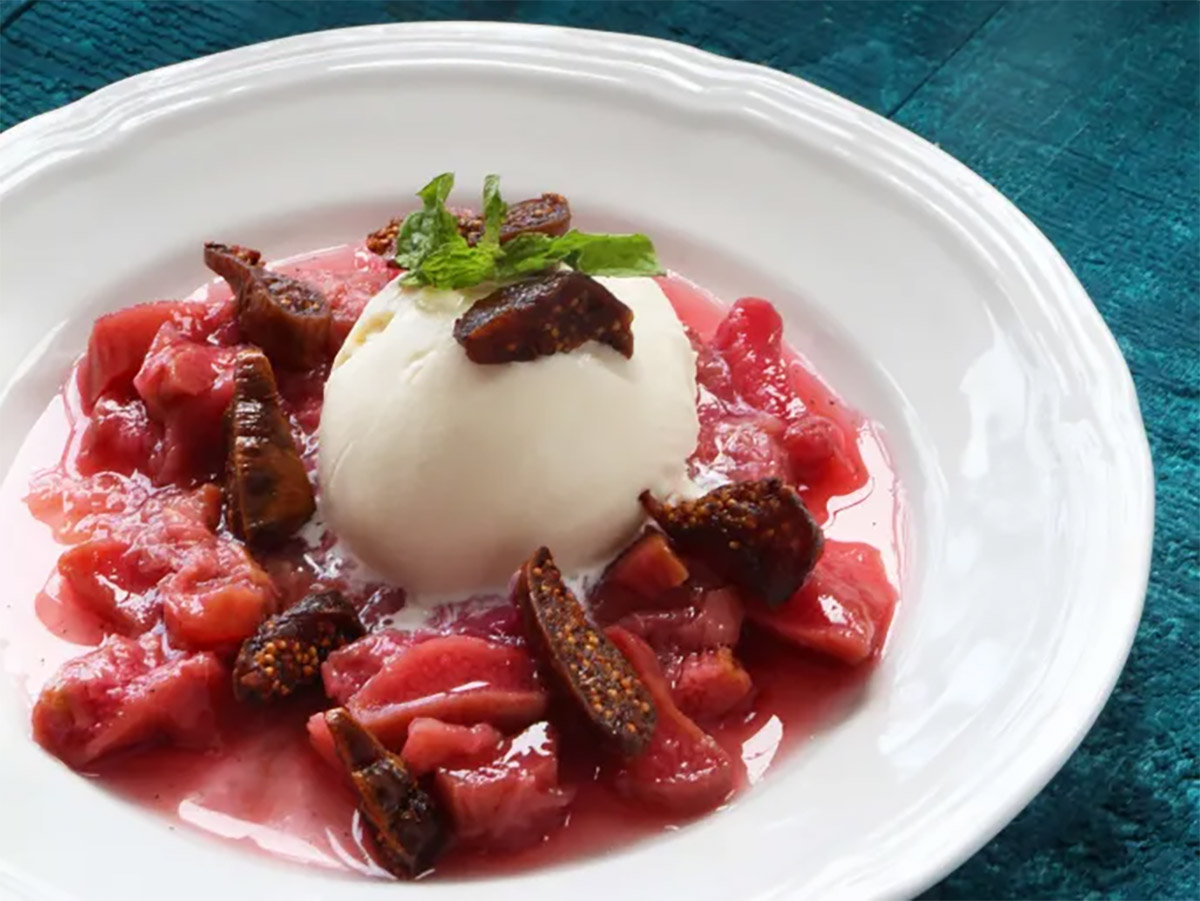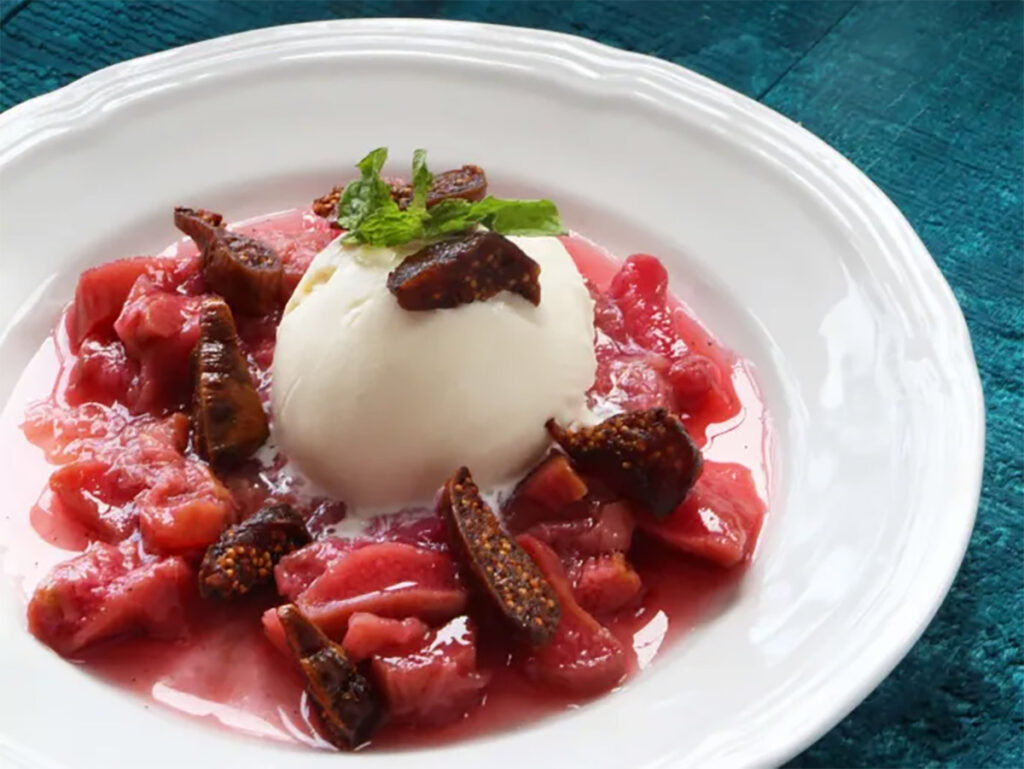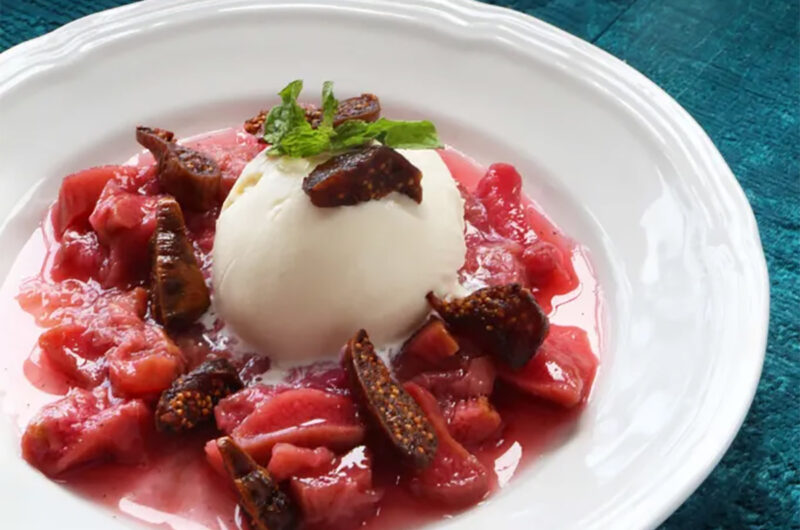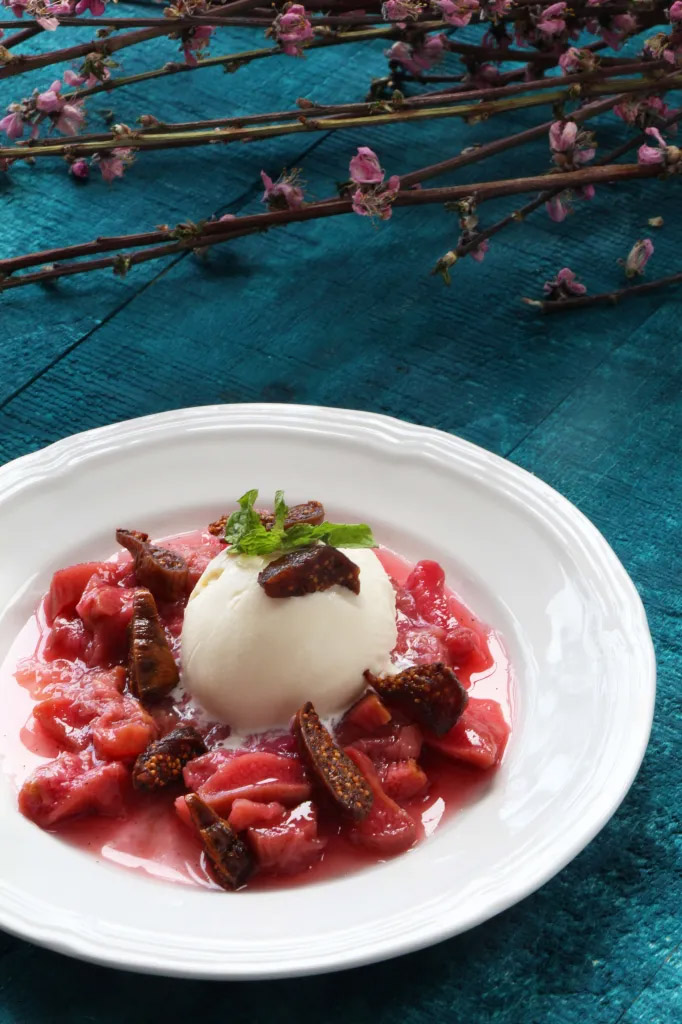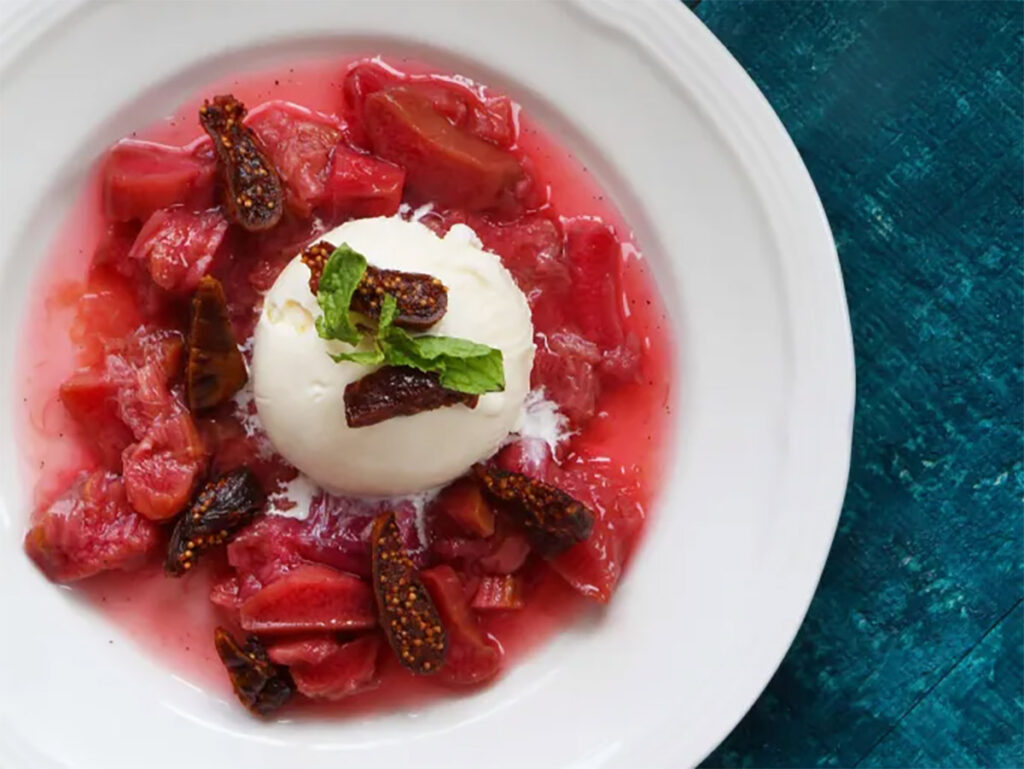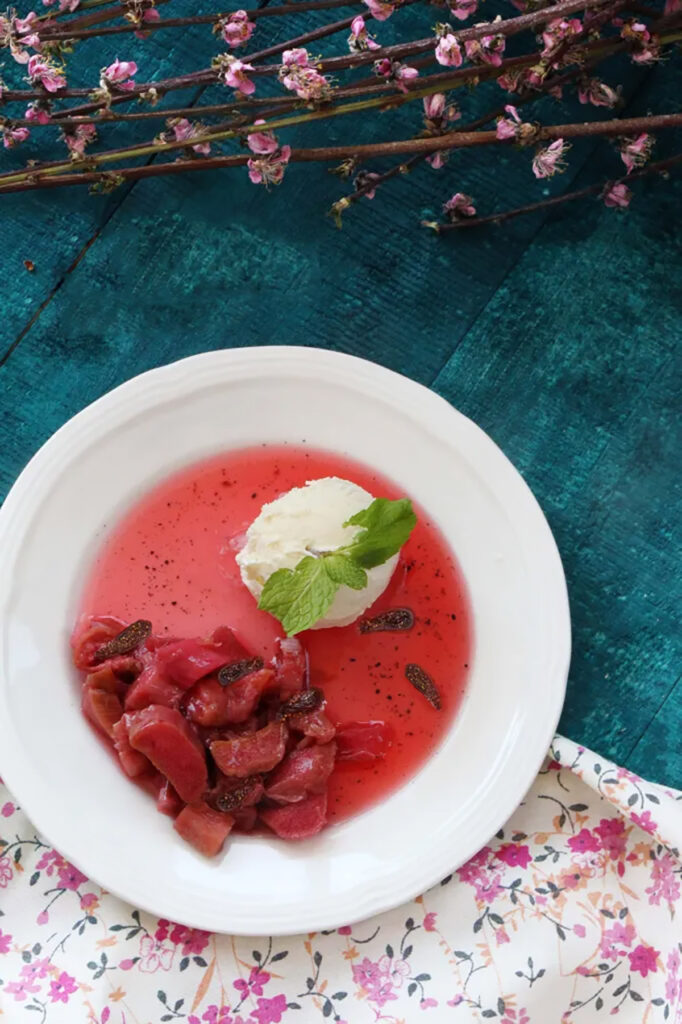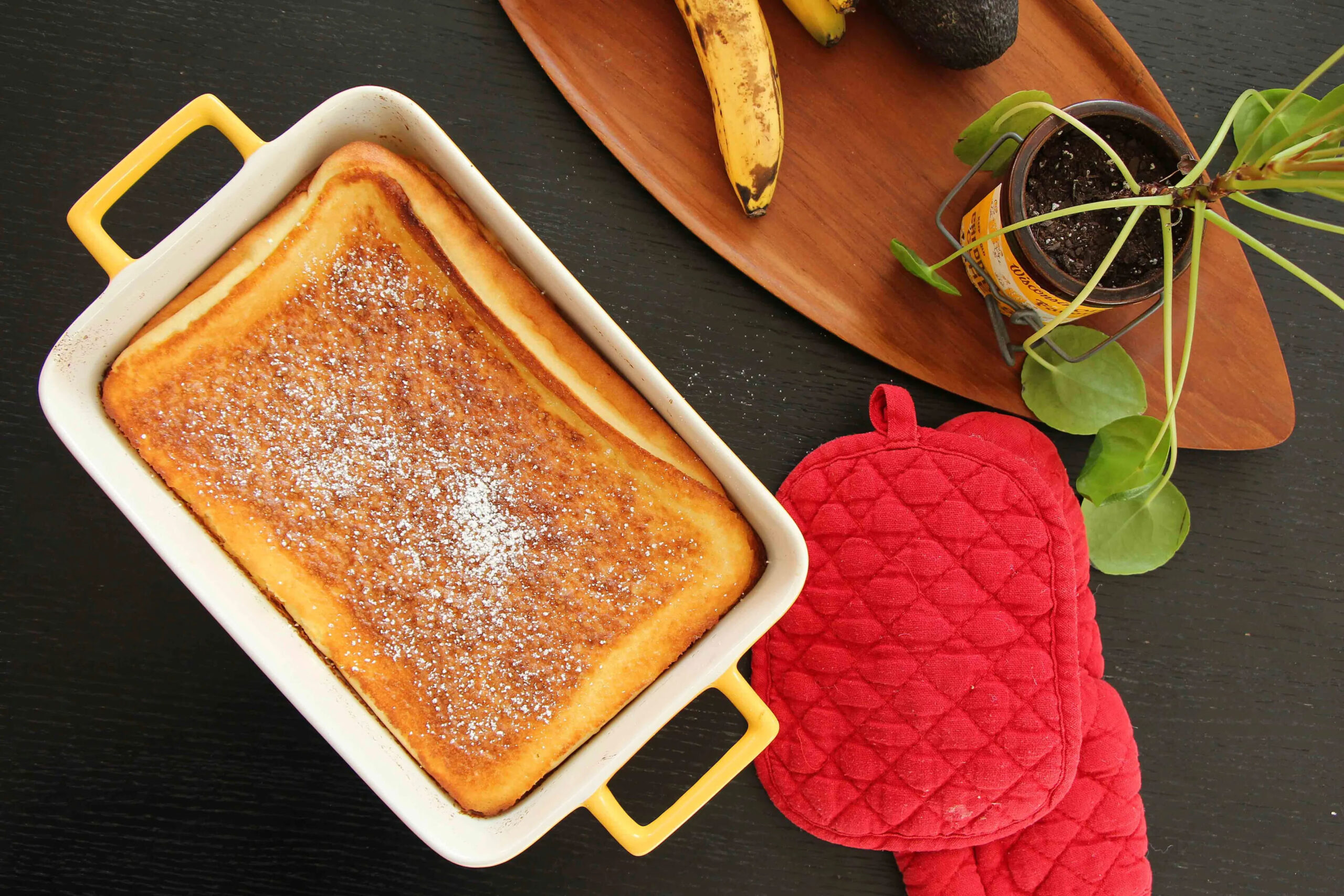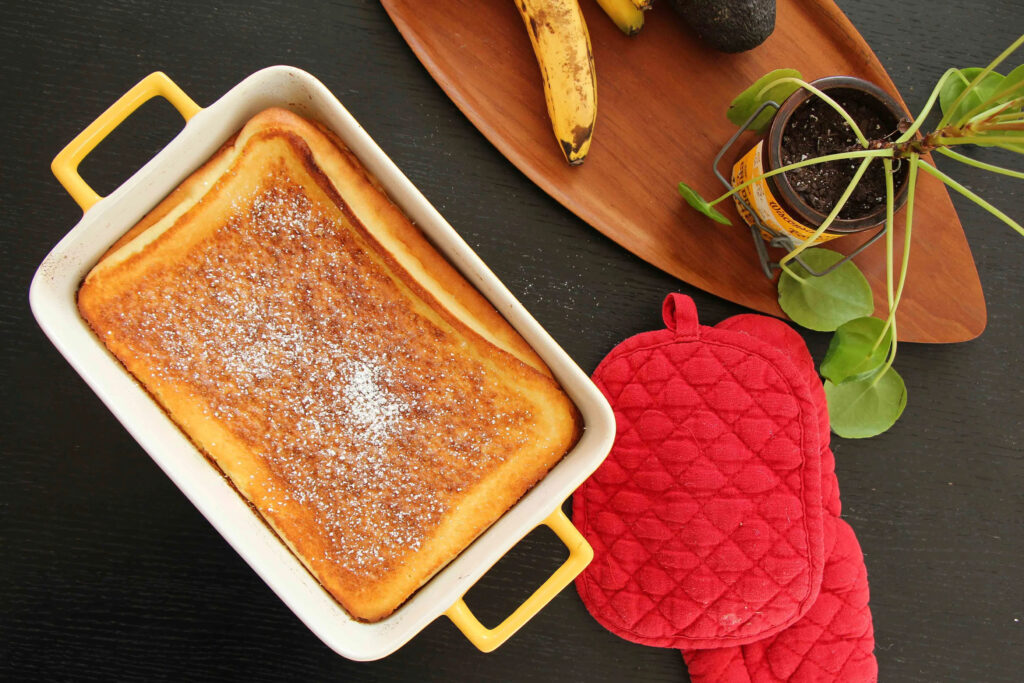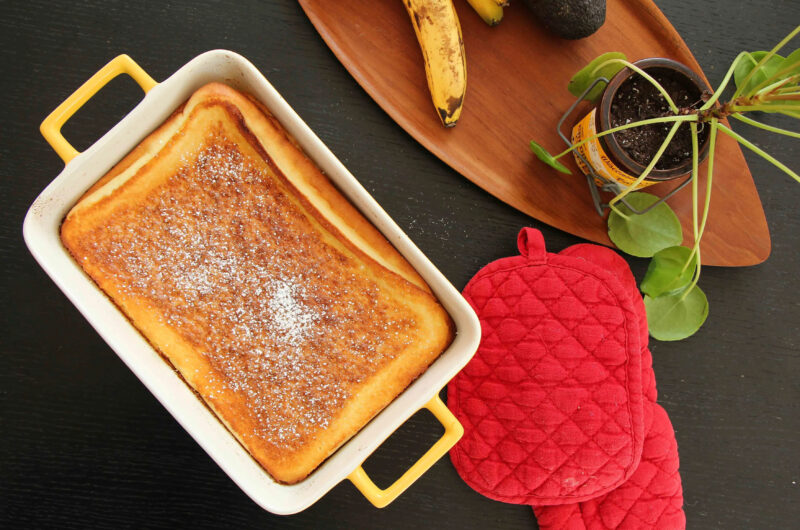Recipe: Flæskesteg – Danish Pork Roast
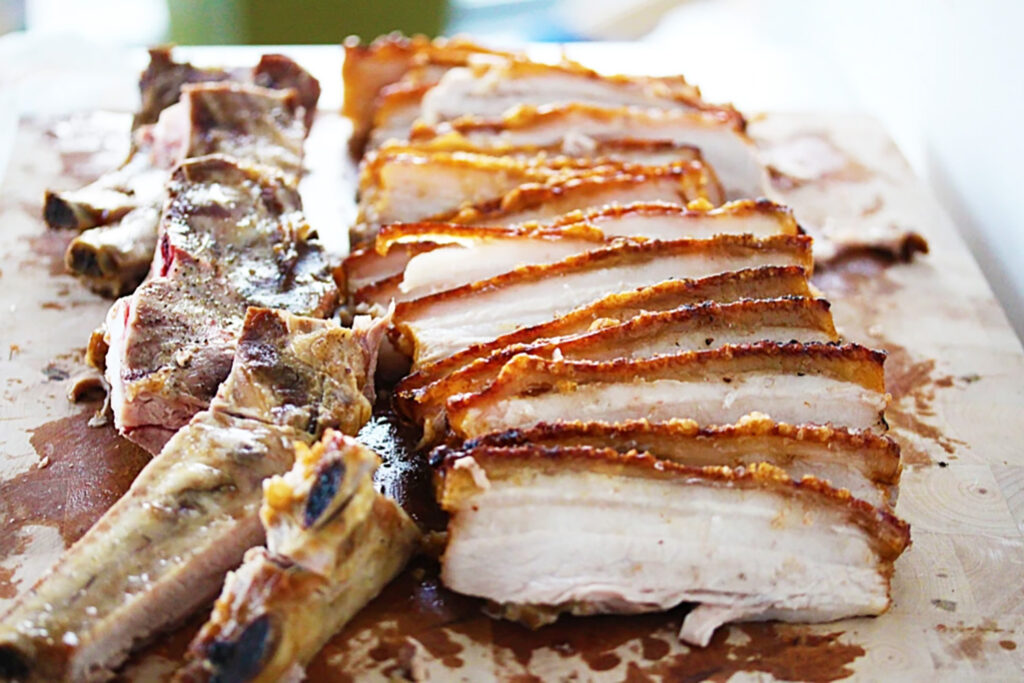
Flæskesteg is a classic Danish roast, usually served with boiled potatoes, caramelized potatoes, gravy and cooked red cabbage (or on a piece of rye bread with red cabbage, as I recommend in this post). Flæskesteg is still a popular dish, particularly for Sunday dinner among the older generation, and some people in Denmark eat flæskesteg for Christmas.
Flæskesteg is not easy to find in the U.S., mainly because you need to buy a piece of the pork neck or breast with the rind still attached. As a result, my flæskesteg recipe substitutes the traditional cuts with with a piece of pork belly, which is cheaper and easier to find.
My mum discovered that a great place to find pork belly for flæskesteg is at the “Mulberry Meat Market” on Mulberry St. between Canal St. and Bayard St., in New York’s Chinatown. Just walk to the back where the guys are slicing the meat and ask for a big piece of pork belly, and they will custom slice to the size you want. I usually get a piece that is approximately 13” x 7”. The slab sometimes has bones, which you can tell them to keep or remove. My husband loves the bones so I always keep them in the cut.
